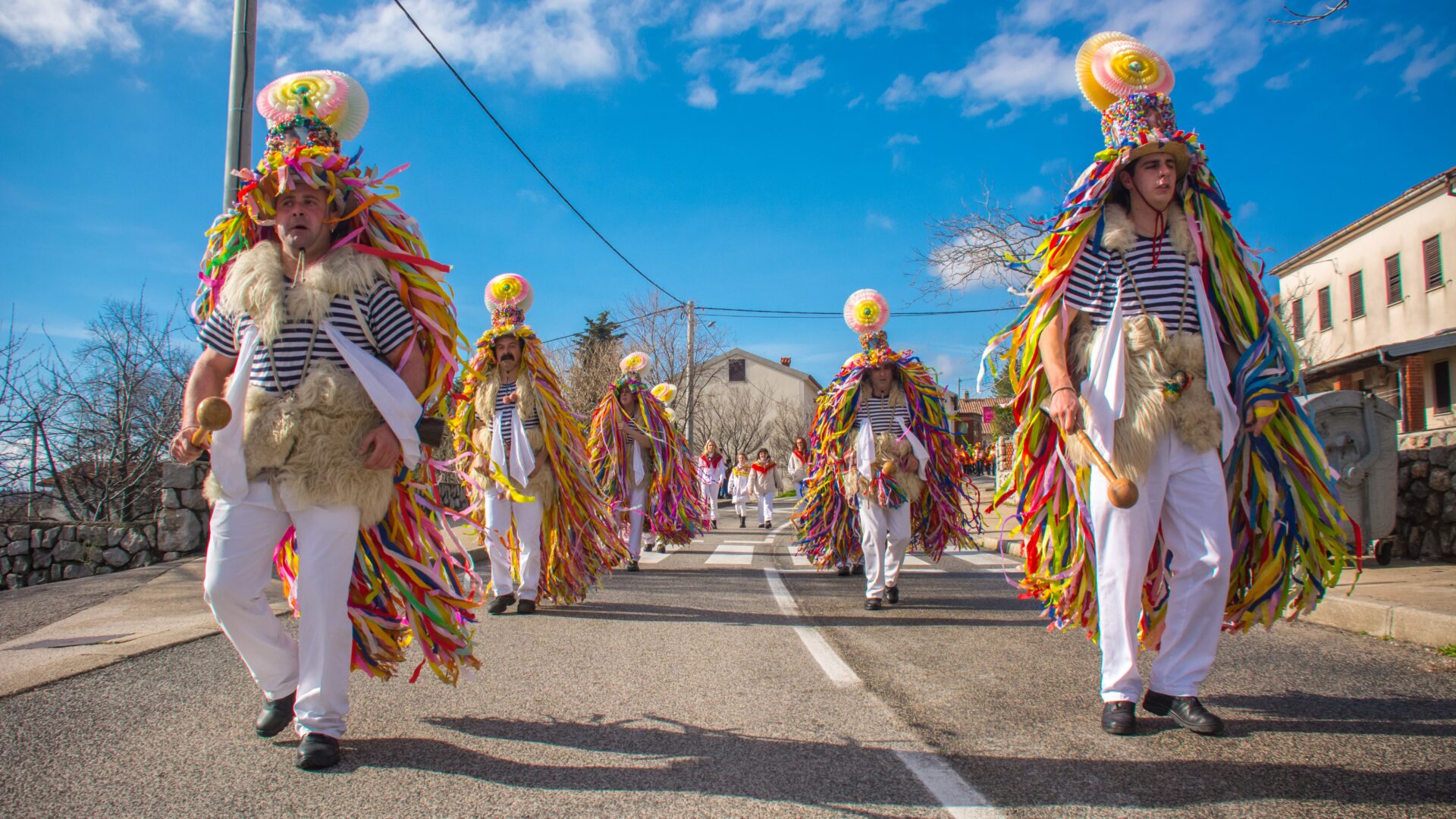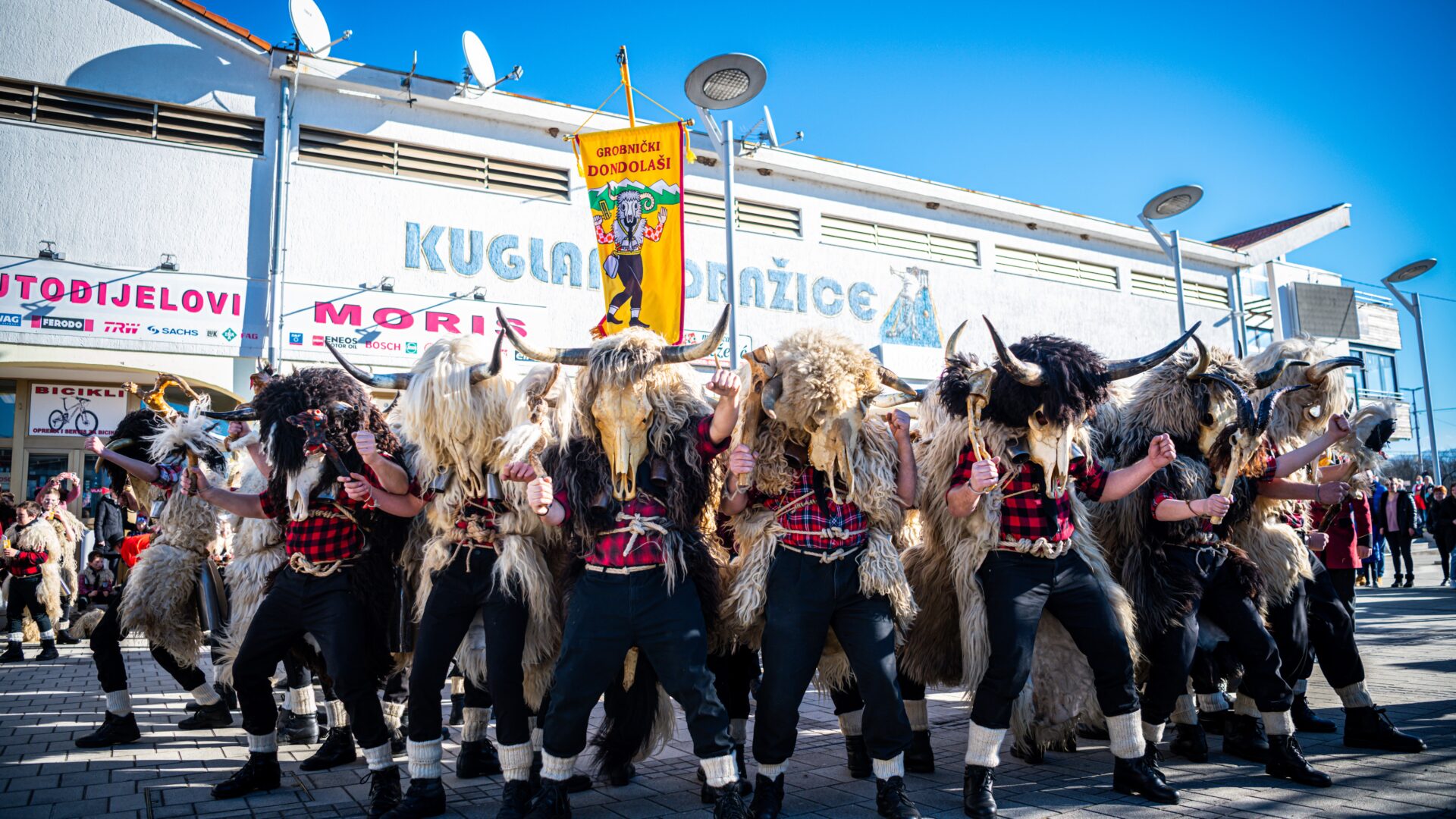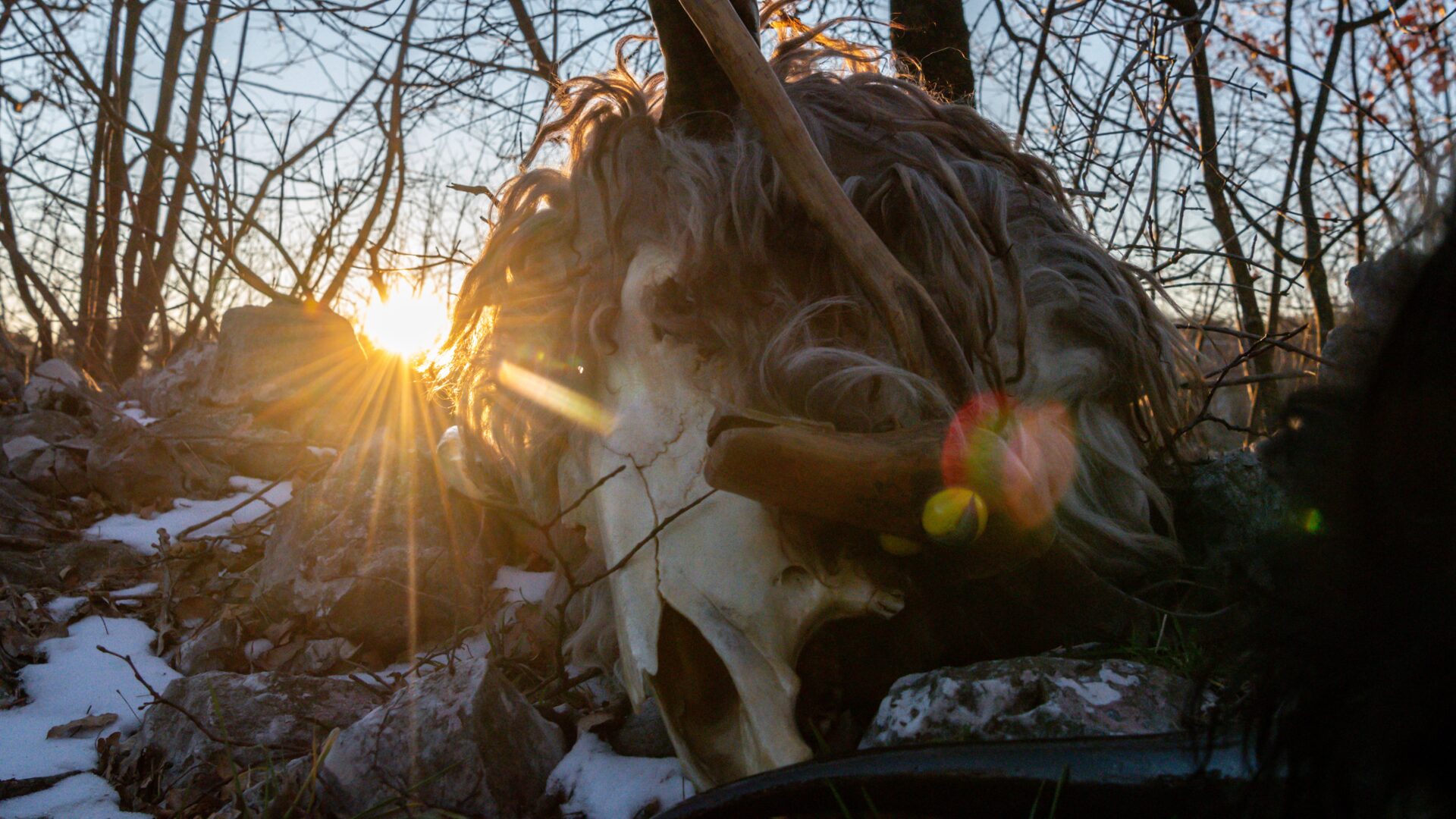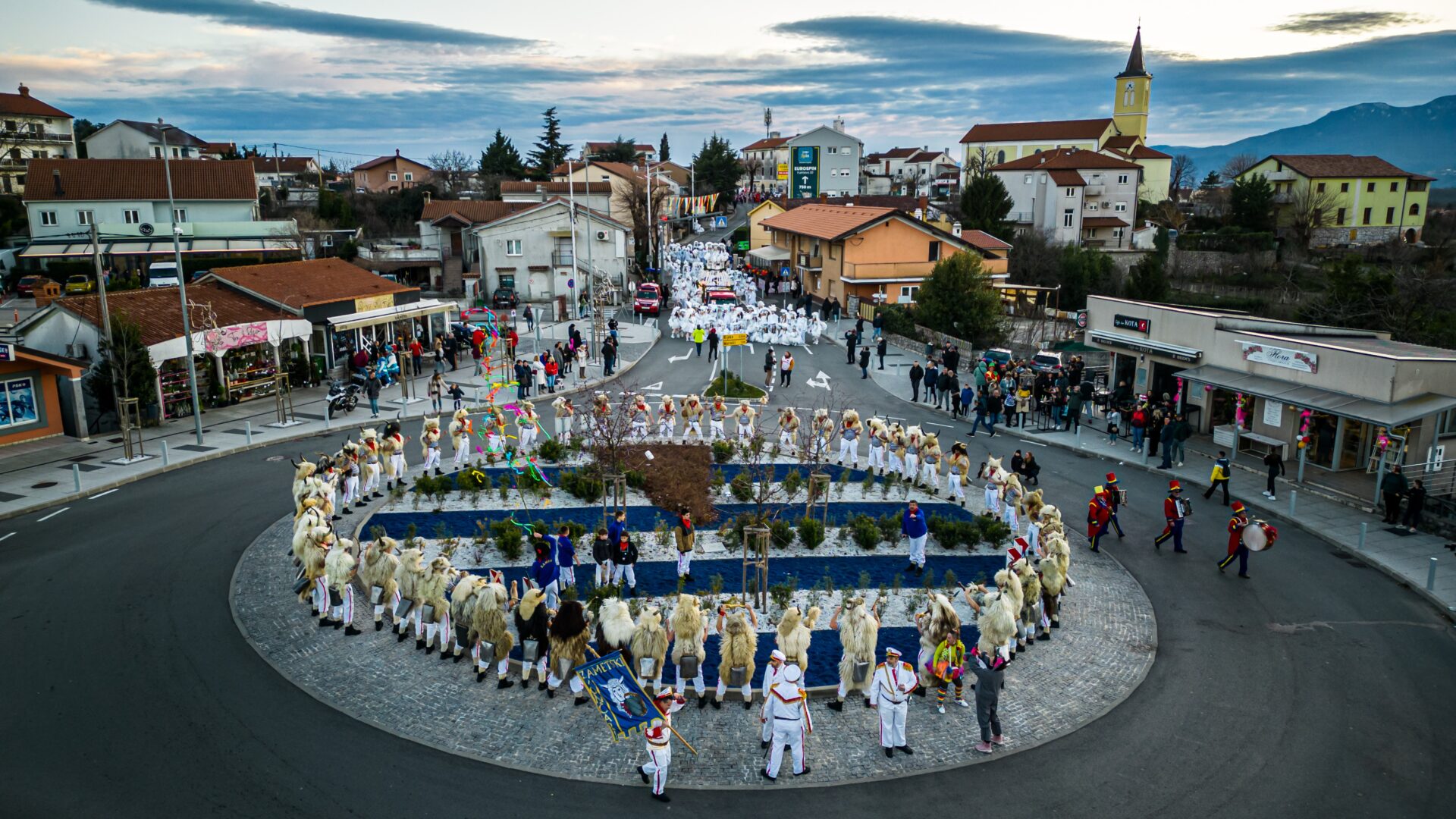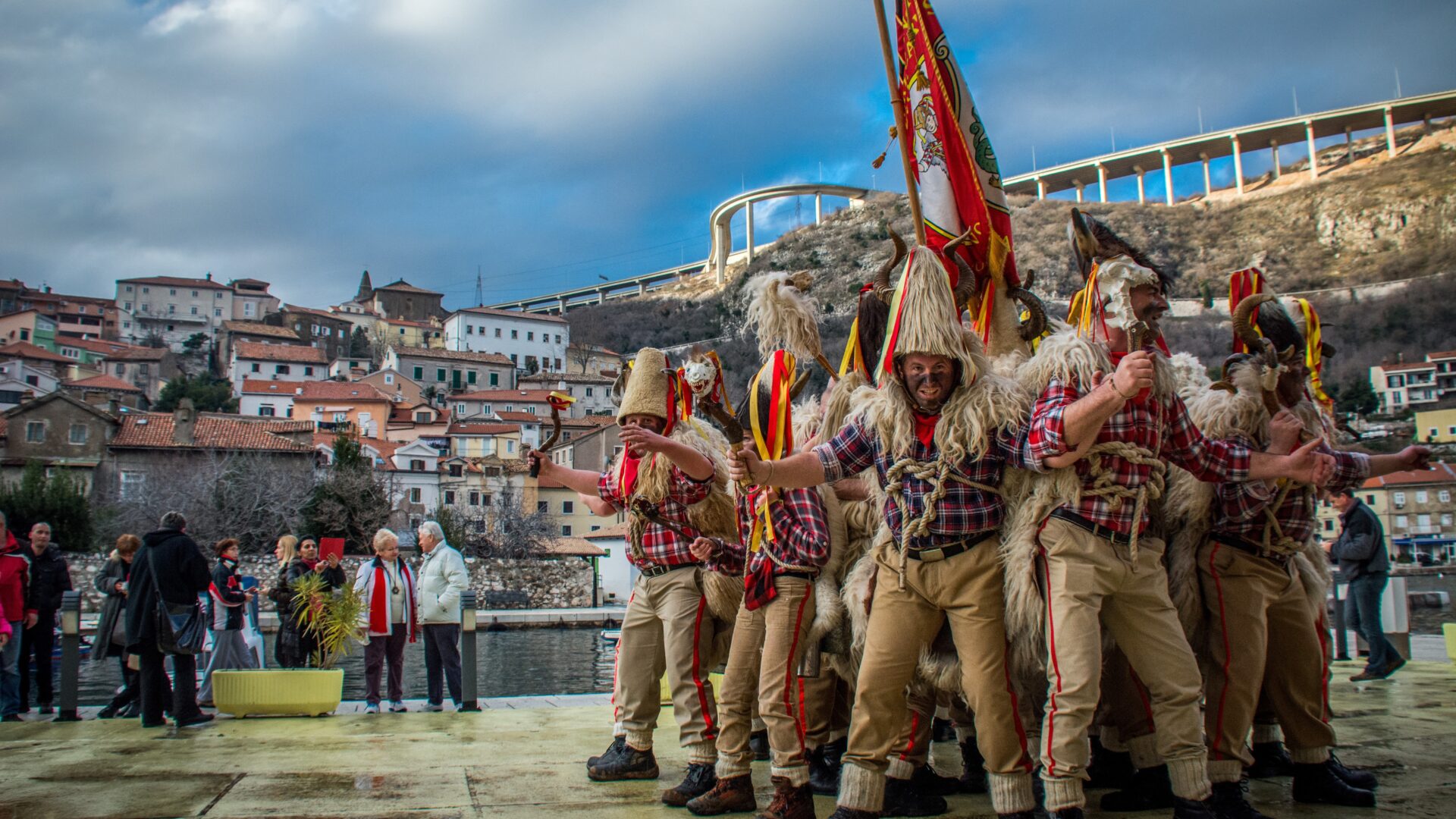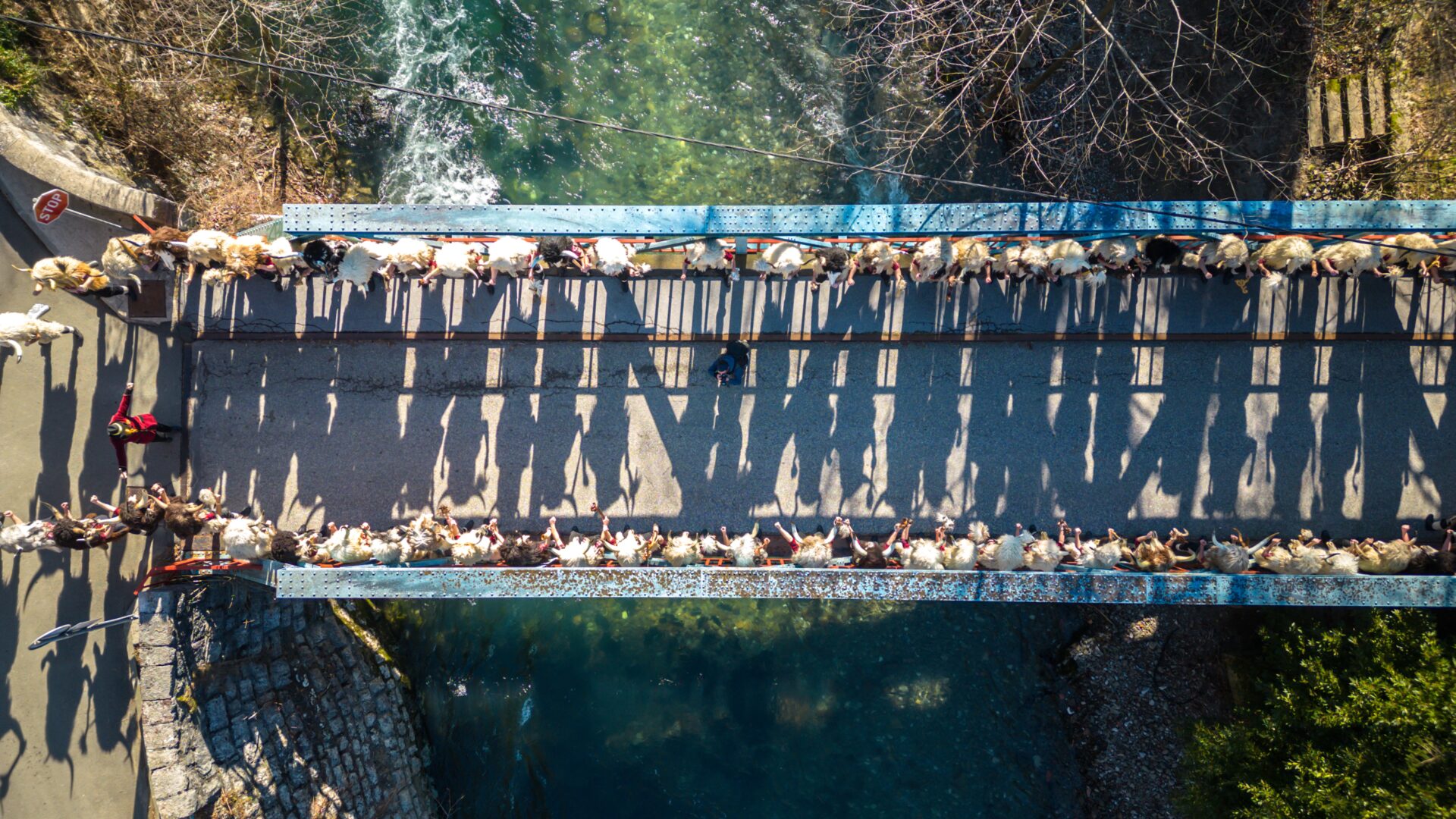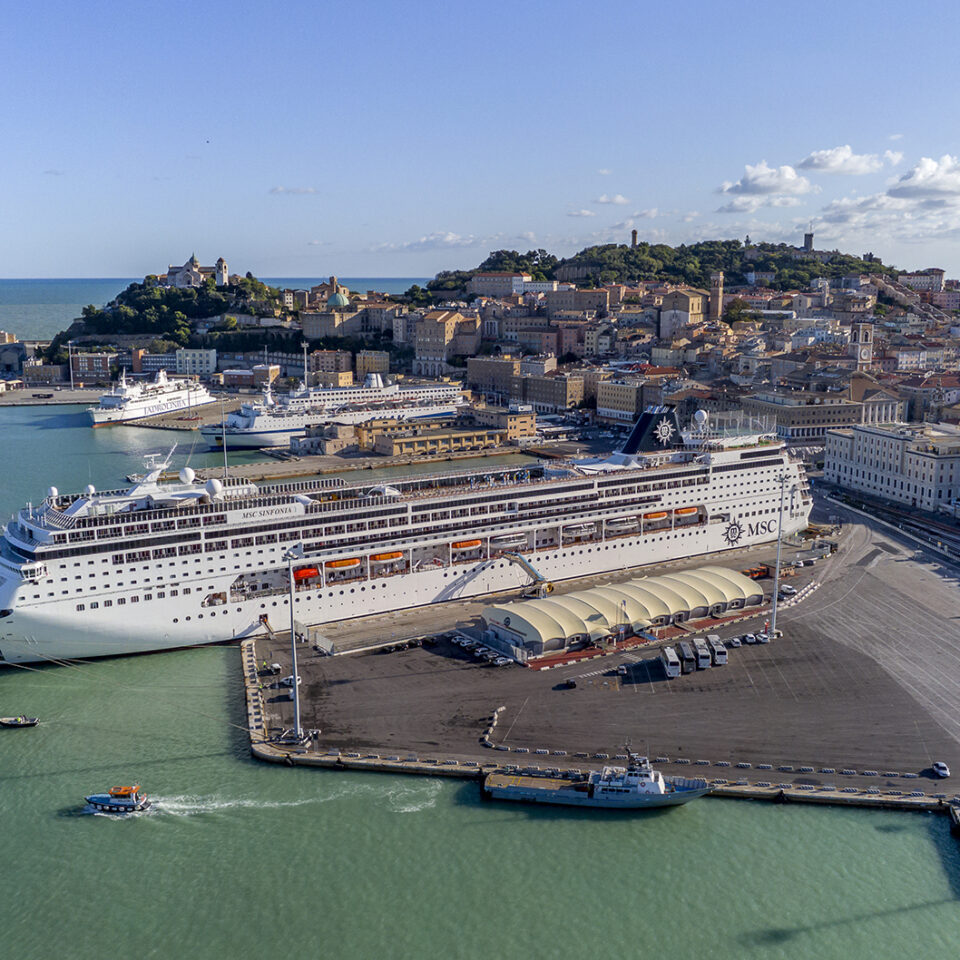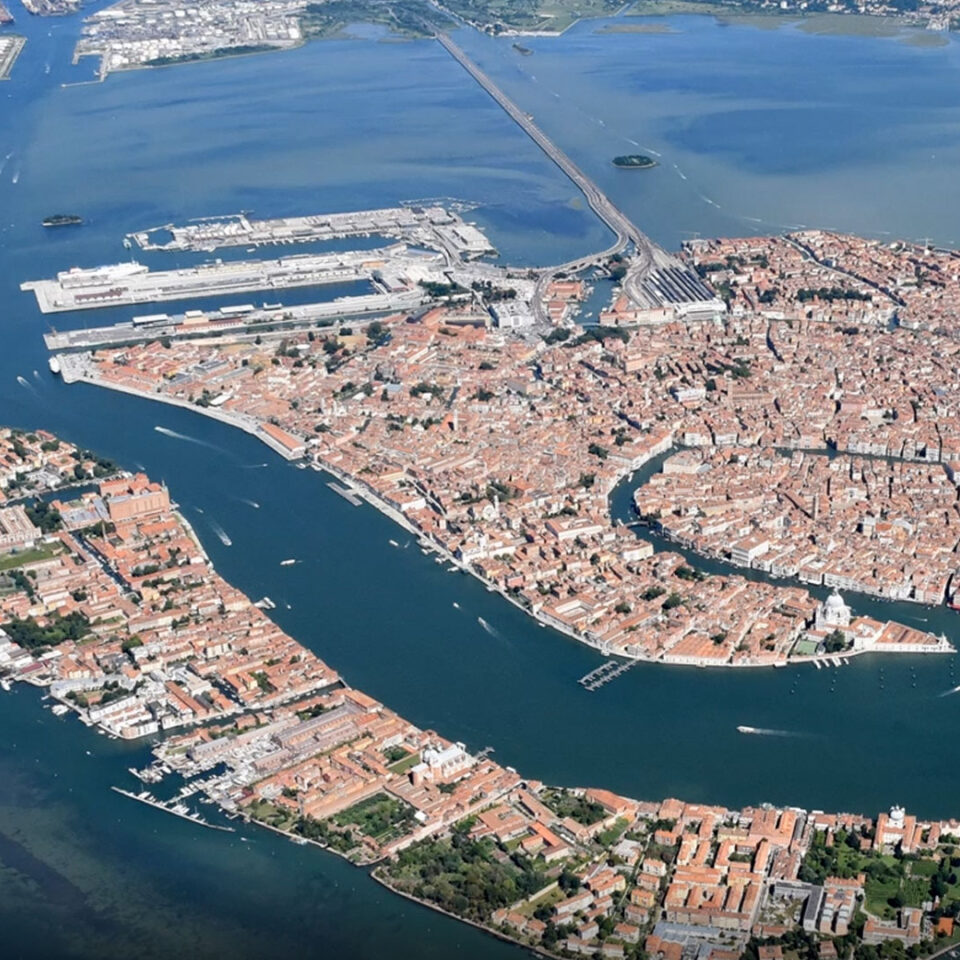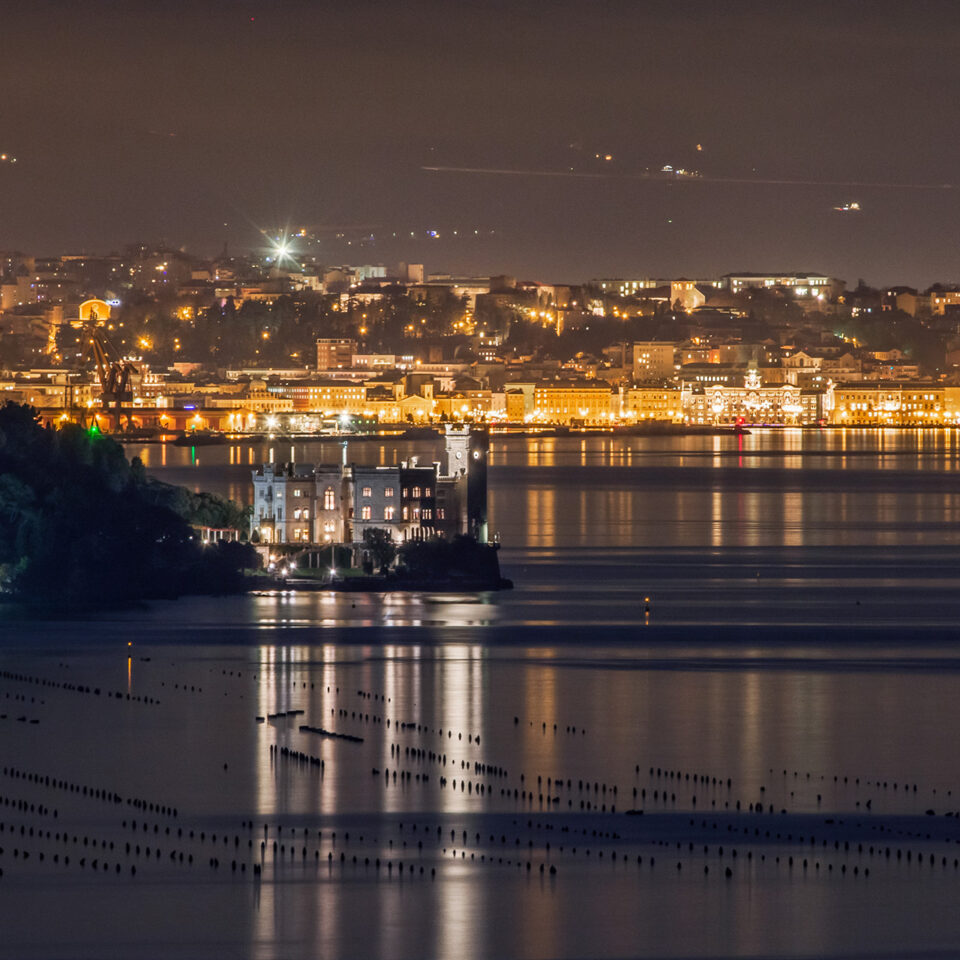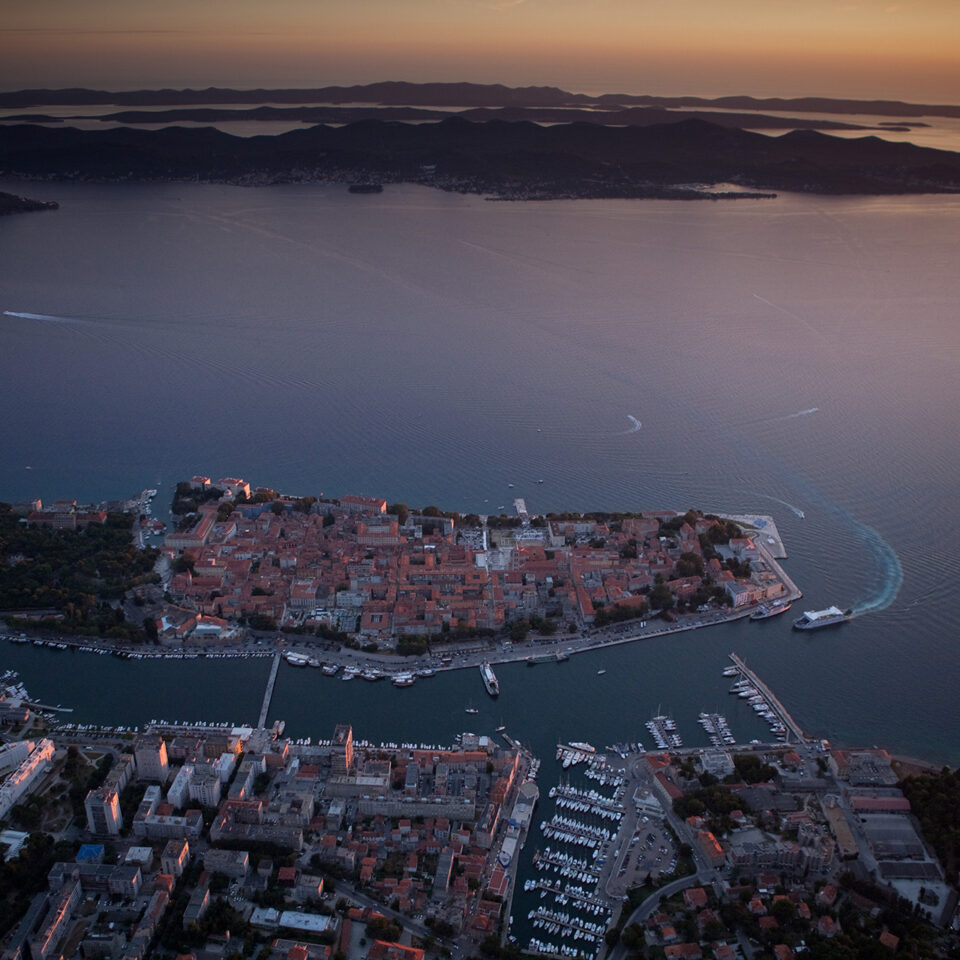

Bell Ringer Groups in the Primorje-Gorski Kotar County
In the Primorje-Gorski Kotar County area there’s a rich and diverse world of bell ringer groups which, each in their own way, nourish the tradition of carnival processions. Even though the bell ringers of Halubje are the most well-known, there’s a plethora of groups which maintain this unique heritage with matching fervor and dedication.
The dondolaši of Grobnik, with their specific head coverings and sheepskin capes, walk the routes of the Grobnik area. Their bell ringing echoes and carries the message of rejuvenation and fertility. Their tradition is joined by the bell ringers of Zamet, whose route passes through more urbane parts of Rijeka, but the spirit of the customs remains intact—both groups form the kolo, and the locals welcome them and prepare delicacy meals for them.
The bell ringers from Rukavac, Zvoneća, Mučići, Mune, and Brgud are a part of the wider bell ringer region of Kastavština. Every group has its own rules and details—from the type of the bells, the way the procession is held, to the decorations on their heads. Some, like Mune and Brgud, walk woodlands and hill regions, oftentimes shrouded in the near-mystical cover of fog and snow.
The Žejane bell ringers from Ćićarija hold a special place. They’re recognizable by their big hats decorated with paper ribbons in vivid colors and masks which cover their whole faces. The procession of the Žejane bell ringers symbolizes the battle between good and evil, and every movement, shriek, and sound carries a meaning.
We’d do ill to forget the bell ringers of Kukuljanovo and Korensko, as well as the groups of Bregi, Frlanija, and Vlahov Breg—each one with special local features and stories that follow them. In the crowd, the Marčejski Stari stand out as the bell ringers who keep the oldest forms of the procession and a special kind of masks, passed on from generation to generation.
The bell ringers are not just keepers of customs—they’re a bond between the past and the present. Their work brings together communities, encourages younger generations to participate, and strengthens the local identity. The woodland paths and the streets they walk down become stages.
Today, many of these groups take part in festivals and reviews, like the one in Marčelji, where the mići zvončari gather—childrens’ groups which keep the tradition going with pride. Events like these are not just culture shows, but emotional encounters between the community and its own roots.
The bells that echo across the Kastavština, Ćićarija, and Rijeka’s hinterland are not just sounds of history. They are the beats of identity—clear, loud, and indelible.

